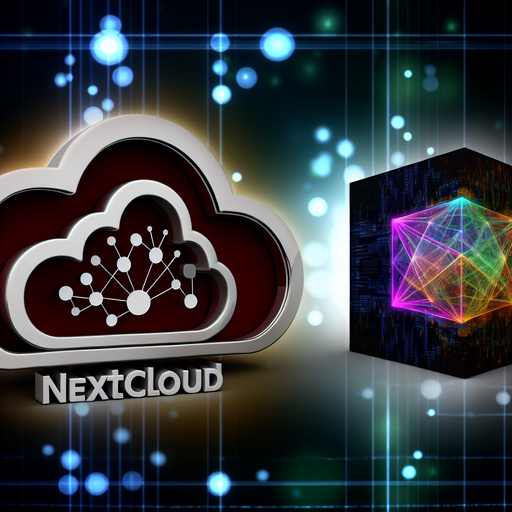Unlocking the Full Potential of Nextcloud with Element
Discover how Nextcloud and Element together provide a robust and secure solution for collaborative work and communication.
Introduction to Nextcloud
Nextcloud is a powerful self-hosted productivity platform that allows users to store, share, and collaborate on files with unparalleled security and privacy. It is especially popular among organizations and individuals who prioritize data privacy and wish to retain full control over their data. With an extensive suite of apps, Nextcloud offers solutions for file sharing, calendar management, contacts, collaborative editing, and much more.
Introduction to Element
Element, formerly known as Riot, is an open-source secure messaging and collaboration client tailored to support decentralized communication. Powered by the Matrix protocol, Element enables users to have encrypted conversations, share files, and integrate with a variety of other communication tools. Its focus on data privacy and decentralization makes Element a perfect companion to Nextcloud.
Get Nextcloud with 1 TB of storage for just up to €3.99 per month.
Try it now for one month free and risk-free.
Combining Nextcloud and Element
Integrating Element with Nextcloud can create a unified platform for secure file sharing, collaboration, and communication. This powerful combination not only amplifies productivity but also ensures that all data remains under your control. The synergy between Nextcloud and Element helps in providing a seamless experience where files, discussions, and projects converge.
Benefits of Integrating Nextcloud and Element
Enhanced Privacy and Security
Both Nextcloud and Element are built with privacy and security at their core. By deploying them together in a self-hosted environment, you can ensure that all your communications and data are secure and private. Encryption, access controls, and end-to-end encryption for messages make this combo a fortress against unauthorized access.
Seamless Collaboration
Nextcloud’s collaborative tools, such as Nextcloud Talk and Nextcloud Office, perfectly complement the messaging capabilities of Element. Teams can easily share files, collaborate on documents, and discuss projects within a single unified platform, reducing the need to switch between multiple apps.
Customizable and Extensible
Both Nextcloud and Element are open-source, giving you full control over customization and extensions. You can tailor functionalities to meet your specific needs, whether it’s adding specialized apps to Nextcloud or integrating Element with other third-party tools via the Matrix protocol.
Simplified Administration
Managing your Nextcloud and Element setup is straightforward, thanks to their user-friendly interfaces and comprehensive configuration options. You can easily manage user permissions, monitor activity, and ensure compliance with organizational policies.
Setting Up Nextcloud
To start leveraging the power of Nextcloud, you’ll first need to set up your own instance. Here are the basic steps:
Step 1: Server Requirements
Ensure your server meets the minimum requirements: PHP 7.3 or higher, a supported database (MySQL/MariaDB, PostgreSQL, or SQLite), and sufficient storage space.
Step 2: Download and Install Nextcloud
Visit the official Nextcloud download page to get the latest version. Transfer the package to your server, extract it, and follow the installation wizard to complete the setup.
Step 3: Configure Nextcloud
After installation, you can configure your instance to suit your needs. Set up user accounts, choose apps to install from the Nextcloud App Store, and configure security settings to ensure your data remains protected.
Setting Up Element
With Nextcloud up and running, it’s time to set up Element:
Step 1: Matrix Server
Element requires a Matrix server for backend support. You can use an existing Matrix server or deploy your own, such as Synapse. Follow the Matrix Synapse documentation for setup instructions.
Step 2: Install Element
Download and install Element from their official website. Element is available for desktop and mobile platforms, ensuring you can stay connected regardless of your device.
Step 3: Integrate with Nextcloud
To facilitate seamless interaction between Nextcloud and Element, you may need to configure integrations such as webhooks or use applications like Nextcloud Talk that can leverage the Matrix protocol.
Optimizing for Productivity
Using Nextcloud’s Collaborative Tools
Nextcloud offers a suite of apps designed to enhance productivity. Nextcloud Talk enables video conferences and chats, while Nextcloud Office allows collaborative document editing. These tools make team collaboration smooth and effective.
Leveraging Element for Communication
Element’s robust messaging capabilities ensure that your team can communicate securely. Create group chats, channels, and direct messages to streamline communication. End-to-end encryption ensures that all conversations remain private.
Integrating Third-Party Apps
Both Nextcloud and Element support integrations with third-party tools. Integrate with platforms like Jira, GitHub, or other productivity tools to create a connected ecosystem that meets all your organizational needs.
Case Studies: Real-World Applications
Organizational needs for secure collaboration and communication are universal. Here are a few examples of how different organizations have benefited from combining Nextcloud with Element:
Educational Institutions
Schools and universities use Nextcloud to manage student data, course materials, and schedules while utilizing Element for staff communication and student collaboration. This setup ensures that educational resources are accessible and secure.
Healthcare Providers
Healthcare organizations employ Nextcloud to store patient records and other sensitive information securely. Element serves as a secure communication channel between healthcare providers, ensuring data privacy and compliance with regulations such as HIPAA.
Remote Teams
Companies with distributed teams use Nextcloud and Element to facilitate remote work. Nextcloud’s file sharing and collaborative tools combined with Element’s communication capabilities create a productive and connected remote work environment.
Conclusion
Integrating Nextcloud with Element creates a powerful platform that combines secure file sharing, collaboration, and communication in one cohesive system. By leveraging the strengths of both platforms, organizations can enhance productivity while ensuring data privacy and security. Start your journey with Nextcloud and Element today to unlock the full potential of a unified, secure, and efficient workspace.
